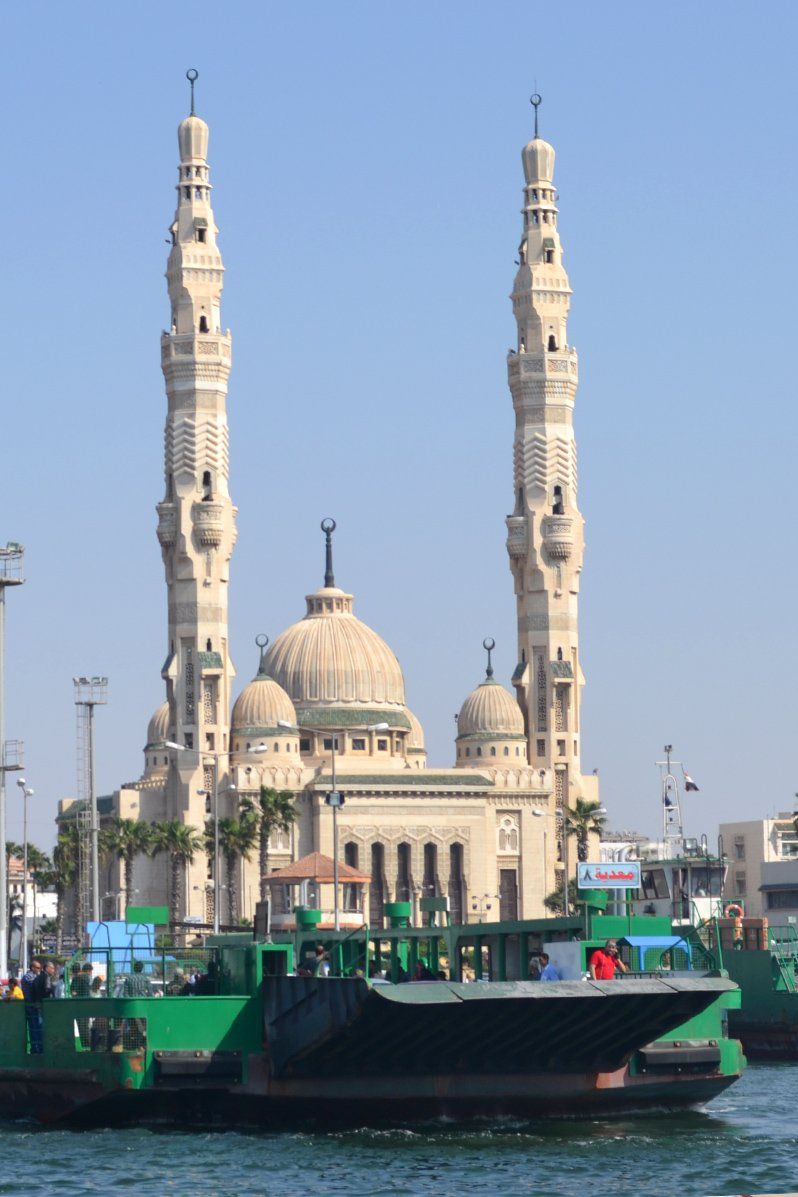Taverna Barba Kiriako’s
GREEK RESTAURANT

Slide title
Write your caption hereButton
Slide title
Write your caption hereButton
Slide title
Write your caption hereButton

Slide title
Write your caption hereButton
Slide title
Write your caption hereButton
Slide title
Write your caption hereButton
Experience Port Said
It may no longer be the bustling sea port of its heyday, but Port Said still holds plenty of old-time charm and history waiting to be discovered.
Rudyard Kipling once said: if you want to find someone you know who travels, there are two points on the globe where you can wait and they’ll eventually show up. One is the docks of London and the other is Port Said.
The Nile Delta coastal town (at the entry point of the Suez Canal) no longer boasts the Greek or Italian communities that once made it a melting pot of Mediterranean cultures.
But Port Said hasn’t lost its breezy charm and laid-back feel, or the fish markets, historic villas and remnants of its past that make it a refreshing day trip from Cairo.
A difficult history of Port Said
Port Said was born on Easter Monday in 1859, when Ferdinand de Lesseps swung a pickaxe to signal the construction of the Suez Canal. It has flourished as a busy sea port, but also suffered wars and endured numerous development schemes that rarely took off.
Port Said thrived in the 19th and early 20th centuries, when it was a cosmopolitan meeting point of trade and cultures with an at-times seedy reputation as a smuggler’s haven.
It also suffered in wars three times in less than two decades: against the Israeli-French-British aggression in 1956, then again in 1967 and 1973.
“Port Said has always been a symbol of the independence of all Egypt,” president Anwar Sadat said in a 1974 address at the city’s Al-Jamil airfield.
Port Said was declared a duty free zone in 1976 in Sadat’s attempt to rejuvenate the economy hit hard by three difficult wars. It quickly became a shopping destination for thousands of Egyptians as merchants and boutiques offered up goods you couldn’t find in Cairo.
Thousands left the coastal city with stuffed car trunks or layered on several shirts, hoping to pass unnoticed through customs. But a law in 2002 cancelled the city’s duty free status. Port Said never recovered, and today suffers from smuggling that leaves local merchants unable to compete with cheaper products.
Today foreign tourists are a rare sight. But during the holidays the city pulls in many Egyptians from nearby towns like Ismailia for a day of shopping and strolling along the beach.
Port Said’s fish market
Arriving at Port Said, my first stop is the fish market for brunch. The earlier you arrive the better. The local fishermen sell their daily catch from morning until they sell out in the afternoon.
There’s shrimp, squid floating in metal buckets, boulty (tilapia) and barbouni (red mullet). The selection is kept fresh with occasional splashes of ice water.
Crowds of cats surround the stands of the more generous fishmongers, while the occasional pelican also waits to be fed. There’s a wider and fresher selection than at any markets in Cairo.
Take the fish to a baker to get it grilled or fried on-the-spot with a seasoning of lime and vinegar.
Locals often eat more fish than meat, as it’s widely available and often cheaper. Caught in the canal and the Mediterranean, locals say it’s so fresh it still tastes like the salty waters.
El Borg seafoood restaurant has a branch in Cairo. But its original location is on Tarh El Bahr Street near the beach at Port Said. At this famous eatery, you select your fish and get it grilled, fried or baked.
Lunch and beachtime at Port Fuad
If you cross the canal into Port Fuad (the ferries are free and come along frequently) head for ElGendy Sea Food, another popular eatery where you can eat at its breezy outdoor gazebo. I recommend the boulty, cooked to juicy perfection, or the well-seasoned curry shrimp.
Dozens of villas line the path towards the beach at Port Fuad. The seaside colonial architecture is a remnant of the city’s past, when it was home to staff working on the Suez Canal.
Sadly many of the quaint villas are disappearing to make room for tall, uniform apartment blocks. Despite protests and efforts at UNESCO to register the buildings, many demolitions continue.
The beach at Port Fuad is notorious for jellyfish. But in mid-spring plenty of children take their chances and the water isn’t very cold.
This small stretch of coast gives a view of the enormous tankers lining up for entry into the Suez Canal.
There are no huge crowds like at the beaches on the Red Sea or Alexandria. But that’s part of the charm.
The coast is quiet and lined with sea shells and colorful tents where you can order tea.
In the evening, the Gomhurriya district is great for window shopping. You can also visit the few Greek or Italian churches or people-watch at the outdoor cafes.
There are no crowds or speeding cars to dodge here. And a late evening walk is a relaxing way to take in the salty air.
I stumble into a small bookshop packed with volumes of English-language medical books and old postcards. They’re reminders of the city’s history waiting to be rediscovered.
Article Credit: Vanilla Papers
OUR HOTELS
CONTACT US
©2025 Porto Said Hotel & Spa. All Rights Reserved.





